A five-day jaunt in Eswatini in search of adrenalin dished up an ‘extreme hike’, adventure caving and even a little mysticism.
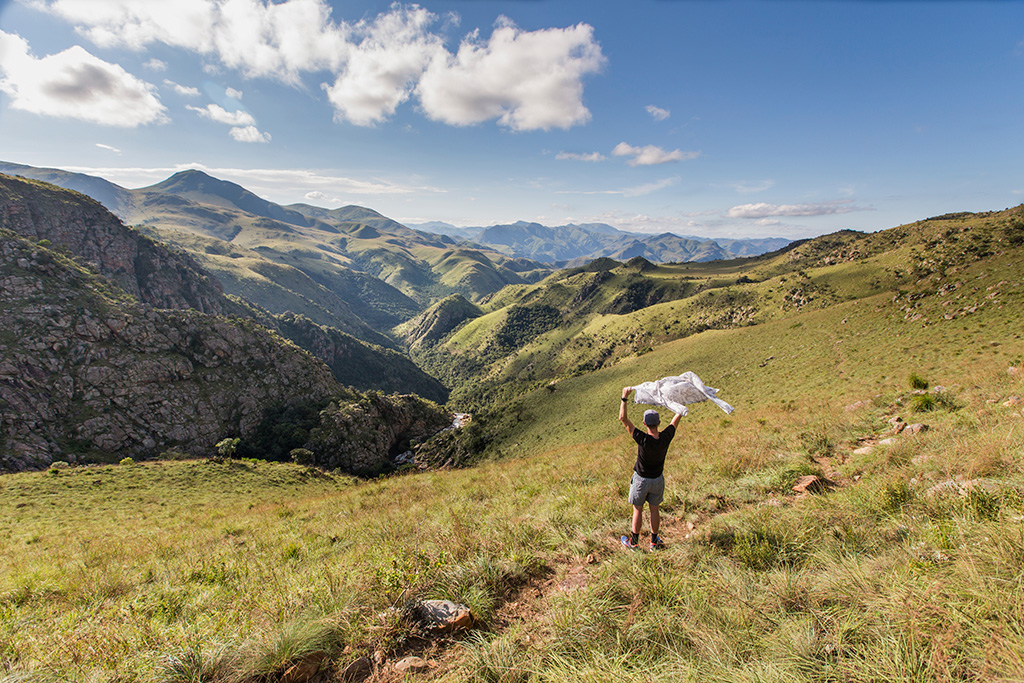
The trail down to the top of Malolotja Falls was empty. All we could hear was the far-off river, the rustling of long grass and birdsong. It’s said that in ancient times a cattle herder came to this area and drifted off to sleep under a tree. The river was thereafter named Malolotja, which means ‘lullaby’. Photo: Matthew Sterne
It was a sunny autumn day when we crossed into the Kingdom of Eswatini. Beside me was a childhood friend, MJ Judge. He was flying blind – all he knew was that we were going to Eswatini and we’d be back in five days. I’d told him to pack a swimming costume, hiking shoes and a flare gun. I thought the lack of information might worry him but I forgot that MJ is the most relaxed person to have ever glided on this Earth.
If there’s one thing I’ve learnt in life, it’s that you can’t rush MJ through a cup of tea. Leading up to our trip, he didn’t ask a single question. Avocado sellers, wood carvers and roadside cows watched us zip by in our Toyota C-HR as we made our way deeper into Africa’s last absolute monarchy.
If you took a sample of our continent’s classic attractions and squashed them into an area roughly 180 kilometres long and 120 kilometres wide, you’d get Eswatini (formerly Swaziland). There’s big game, traditional culture, epic vistas and an array of adventure sports. We were there to focus on the latter and find out if the rumours were true – is Eswatini really an adventurer’s paradise?
‘Aren’t you curious?’ I asked MJ as we neared our first mystery destination. His lack of interest baffled me, but I soon realised he was just happy to be switching off. ‘It’s so open and spacious here compared to Joburg,’ he said. ‘It feels like you can really just … breathe.’ We’d been in Eswatini only 10 minutes and MJ was already in full holiday mode.
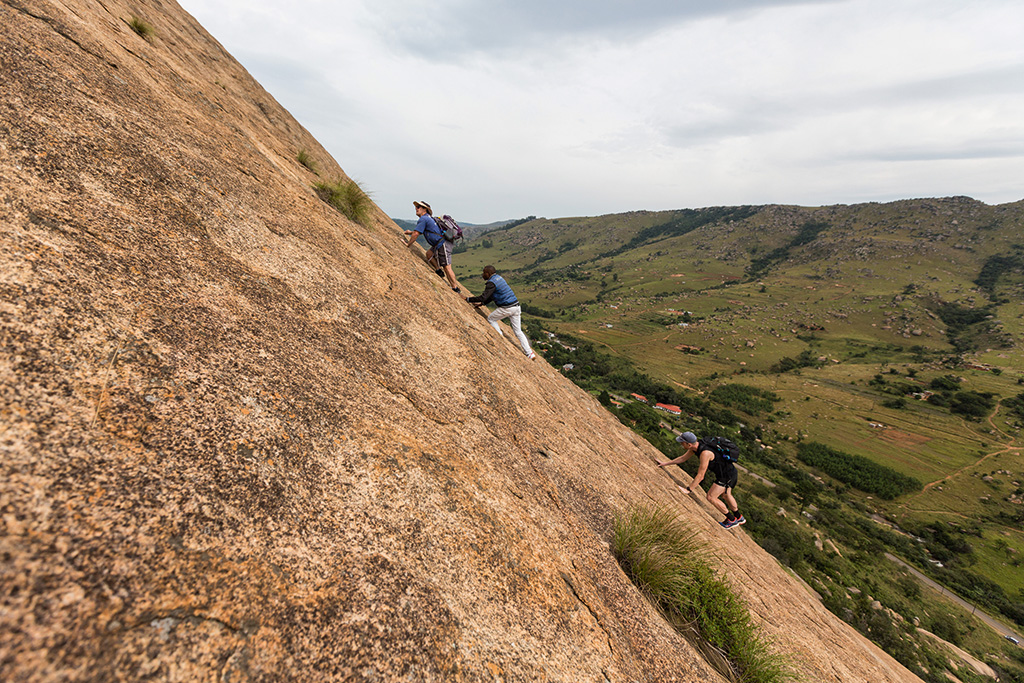
Darron Raw, owner of adventure company Swazi Trails, calls Sibebe an ‘Extreme Hike’ – a fair assessment, I think. Photo: Matthew Sterne
Malolotja National Park soon came into view, its grass-covered mountains rippling like muscles on a forest beast. Before hiking to the 95-metre Malolotja Waterfall, Eswatini’s highest, we kicked things off with a zipline tour that zig-zags across a wooded gorge. We might have been nervous about the 10 ziplines, some over 100 metres long, if it weren’t for a bunch of daredevil six-year-olds who didn’t give them a second thought. As per our unacknowledged man code, MJ and I did our best to act nonchalant. Little did we realise what the next day had in store for us.
Sibebe Rock is a massive granite dome that locals compare to Australia’s Uluru (Ayers Rock) for its size. Rising 350 metres above the Mbuluzi River Valley, the vast slabs of granite stand at an imposing angle. Darron Raw, owner of local adventure company Swazi Trails, calls it ‘the steepest hike in the world’. Darron is a self-confessed, lifelong student of adrenalin. He’s a volunteer snake handler, has done more than 200 paragliding flights and is a local councillor (which provides its own form of excitement). The uncharted rivers of Eswatini drew him here as a young paddler from South Africa and the relaxed lifestyle and sense of opportunity convinced him to stay.
‘You’ll need to walk upright with your feet outward like a gecko,’ Darron told us. ‘If you bend forward to grab hold of the rock, your feet will slip from under you. It goes against your instincts but you’ll just need to ignore them.’ We initially traversed around the base and then shimmied up a crack. The angle was ridiculous and our only salvation was the good grip the granite offered. It felt like if Sibebe was one-degree steeper we’d have simply slid off the mountain. A dropped water bottle, shooting down and finally exploding, illustrated the perils of a misstep. MJ climbed up behind me and I knew from his silence, pale look and owl-like eyes that he was having a mild freakout – which I found rather pleasing.
After an hour of gravity-flouting scrambling we reached the large plateau on top with its playground of boulders. We took in the view of the narrow valley below us, its scattering of huts and the opposite ridge. A jackal buzzard swooped by. While we had a snack, Darron explained the nuances of his adopted homeland. ‘It’s more relaxed and friendly here. There’s a sense of the Wild West as no one stops you from doing things,’ he said. ‘For some reason, visitors tackle things here they wouldn’t do at home. They cross a border and find a place that’s familiar but different, where there’s the feeling of having a lot of space to yourself.’ The descent was even more unnatural than the climb. Instead of taking it at an angle, we shuffled directly down – taking small steps, remaining upright and trying to stay calm.
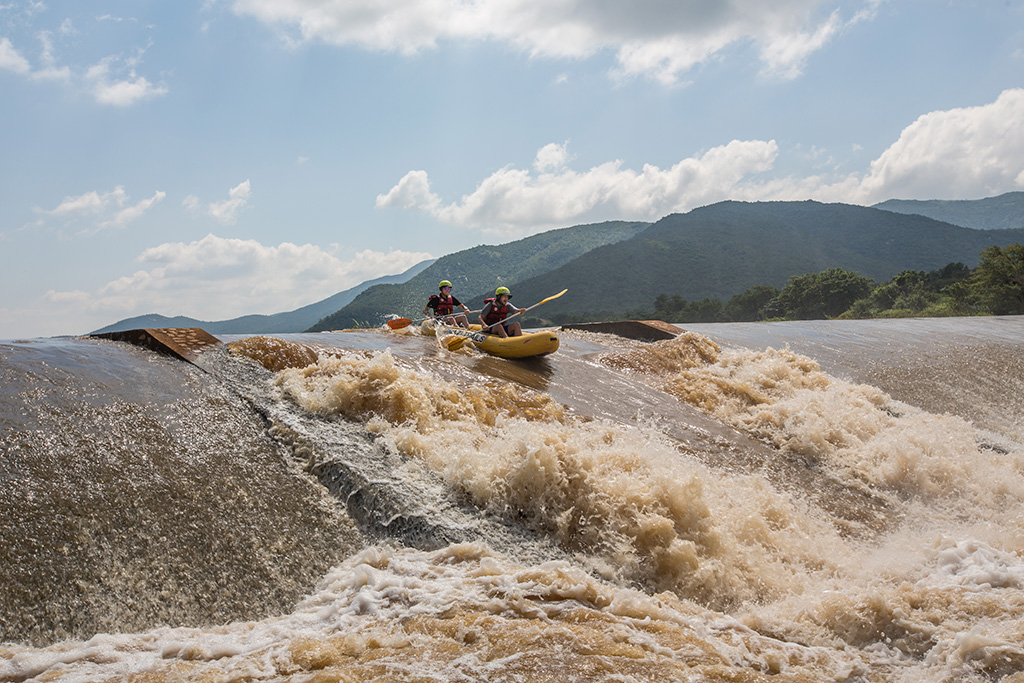
MJ and I tackle a weir on our rafting trip on the Lusutfu River. Photo: Matthew Sterne
There was little time to rest as our next escapade kicked off that evening. Darron drove us into the mountains above Ezulwini Valley, put us in overalls and a hard hat and led us on an hour-long hike to a small rocky opening. ‘We’re standing at the entrance of an intricate system of caves,’ Darron said as night closed in around us. ‘We’ve mapped two kilometres of it but we believe that’s only five per cent, which would make this one of the biggest granite caves in the world. It’s basically a massive heap of boulders balanced on top of each other. We’ll be like ants exploring a mound of gravel.’ Then he added, ‘You get different types of adventures, soft and hard. This is not a soft adventure.’
Feeling like comic-book explorers, we entered the cave of wonders. The gaps between boulders were tiny and we spent the next hours squeezing between them, hauling ourselves down chimney-like chutes, crawling along bumpy floors and climbing down ledges. We passed landmarks named after previous incidents with tourists, like the German Hole and the French Connection, which came with amusing anecdotes. We found a mesmerising water feature called a flowstone, sleeping bats and a species of harvestmen spiders endemic to the caves.
About 70 metres and an hour-and-a-half into our descent, we heard rushing water. The Gobholo River, running underground for two kilometres, was our subterranean destination. We turned off our headlamps and, swallowed by darkness, the realisation of how deep we were in the mountain set in. We dipped our hands in the river, then started scurrying back, contorting our bodies up a different return route. We finally resurfaced in the dark, sweating and dirty, relieved to breathe fresh air once again.
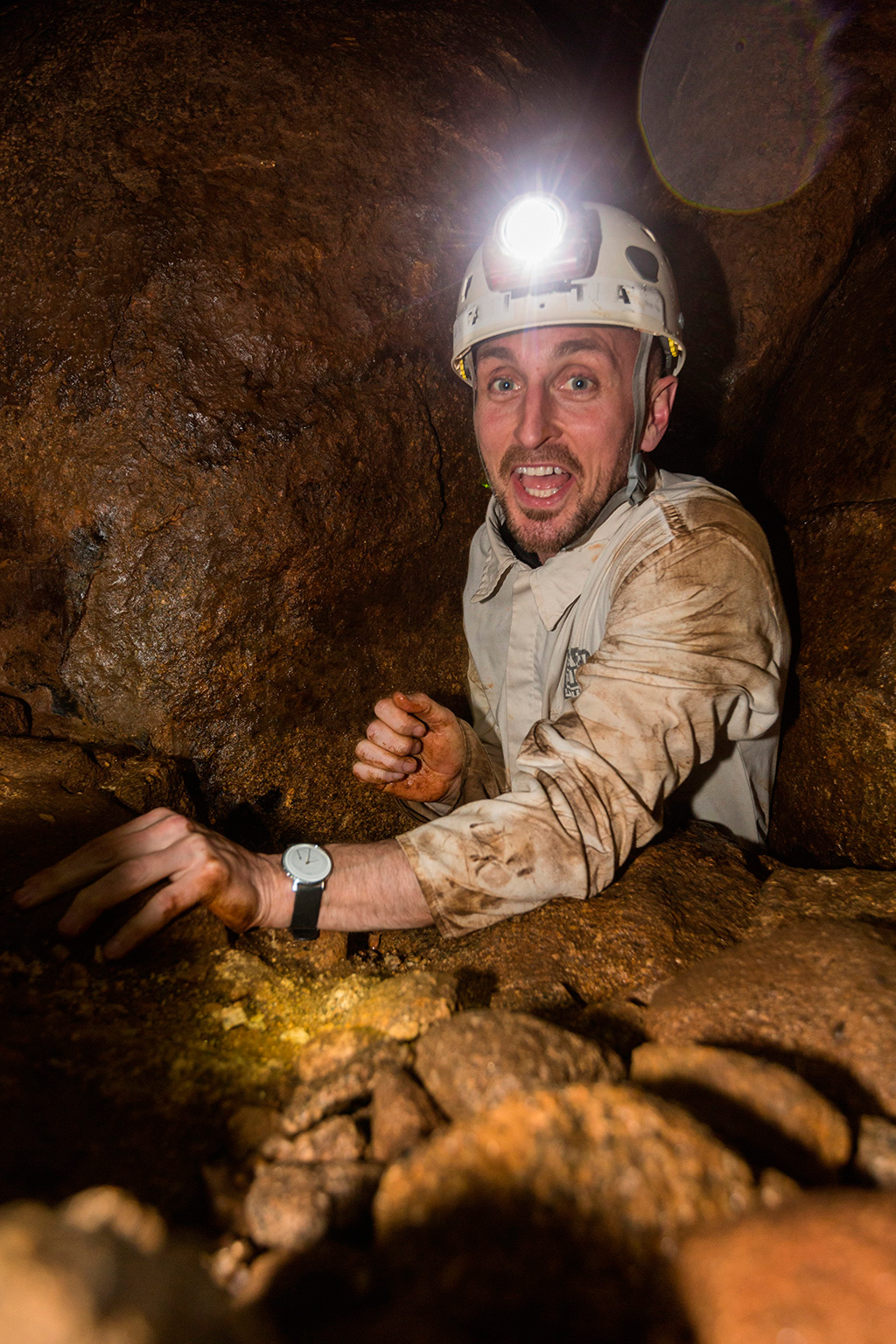
The overalls came in handy in Gobholo Cave for Welsh traveller Mark Gardner. Photo: Matthew Sterne
Next came whitewater rafting on the Lusutfu River. We paddled through rural lands, passing cows drinking along the banks and herons standing regally in the shallows. There was a long stretch of small rapids that we bounced through merrily and finished with a rapid so big even our guides went overboard. It’s called Brexit because it ‘takes you by surprise, can lead to break-ups and no one really understands it.’
The following day, we visited Mlilwane Wildlife Reserve for mountain biking and horse riding. From the stables, our horses took us past relaxed zebra and blesbok towards Execution Rock, where lawbreakers were once thrown off for their crimes. The twin peaks of Sheba’s Breasts also came into view. A mountain of the same name appears in King Solomon’s Mines, as does an underground river. Legend has it that H. Rider Haggard wrote the novel after travelling through the area in the 1880s.
The Ezulwini Valley had been our base since day two, but our final destination would take us through the urban centre of Manzini, beyond the sugarcane fields that smelled like Christmas pudding and into the far north-east of the kingdom. MJ had been handling our activities with typical breeziness, but I wasn’t sure what he’d think of our final, somewhat different, adventure.
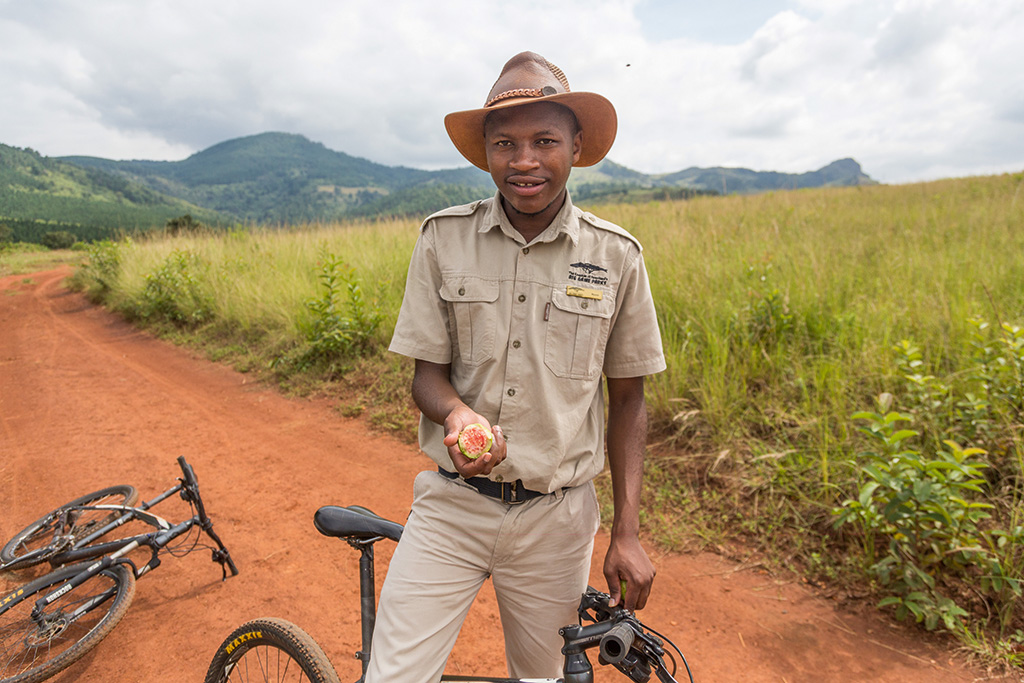
a wild fig snack in Mlilwane Wildlife Sanctuary, during a guided mountain-bike tour with guide Mpendulo Dlamini. Photo: Matthew Sterne
Sitting atop the Lubombo Mountains, Shewula Mountain Camp enjoys a panoramic view of the nearby game parks. ‘When it’s clear you can see all of the Swazi Lowveld,’ manager Lindiwe Sifundza told me. Shewula, now 20 years old, was Eswatini’s first eco-tourism project. It was there that we met the medicine man at his hut. I asked Lindiwe about the sangoma’s practice. ‘If you believe in it, it works,’ she said. The floor had dozens of bottles filled with the powder of pounded trees and roots for concoctions to address the likes of snake bites, pregnancy issues and ‘mind disturbances’. A row of calabashes, with porcupine quills in them, lined the shelves. The sangoma entered with a vervet monkey skin draped around his waist, accompanied by a waft of wood smoke.
After explaining his journey to becoming a sangoma, he brought out his collection of bones, shells, seeds, sticks and dice. Would we like our fortunes told? With a reassuring smile he threw the bones on his mat. A pause, and a slow sifting of the elements. He spoke at length. Lindiwe translated. I must pay more attention to my ancestors, he advised, especially my father’s mother. If I carry out a small ceremony involving a bath and some coins, luck and good travels would come my way. There was more said, personal and intriguing, and enough detail to make me wonder about his words, still now. MJ went next and he came out of the hut with the same rattled look I knew from Sibebe. It seemed we’d have something to talk about on the way home.
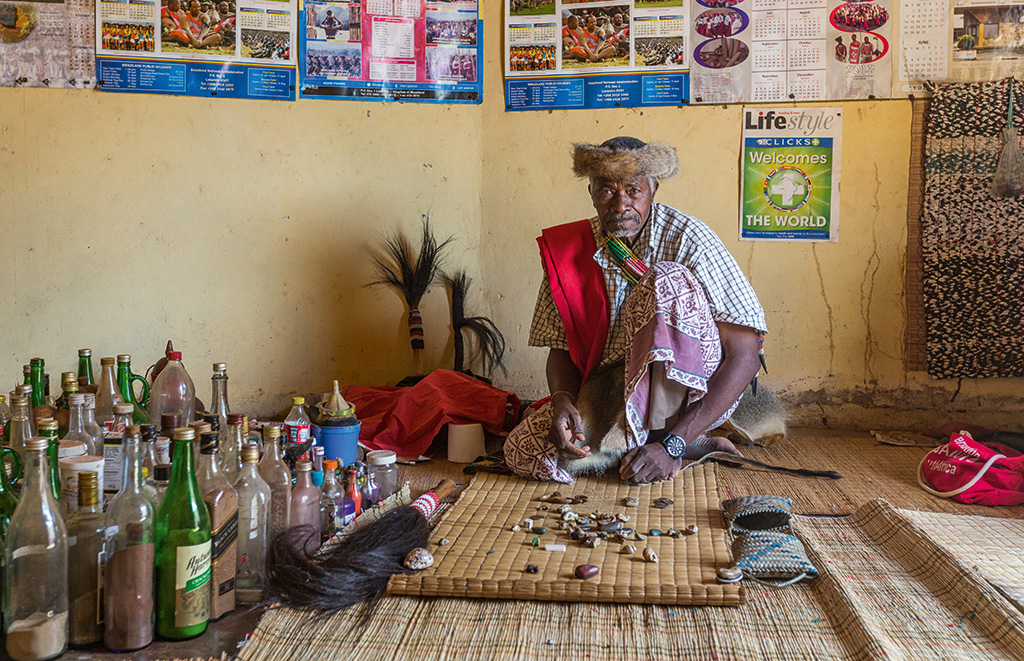
Among the bottles and calabashes, the sangoma Mahlalenyonini also had different whips, used for warding off and communicating with the spirits. Photo: Matthew Sterne
Our journey had been blessed with adventures mixed with a touch of eccentricity, but we still came away feeling supremely relaxed. Maybe that’s what the Kingdom can do to you. The underground rivers, endless caves, steaming rock pools and empty valleys cast their spell. Or was that the witchcraft? The writer Frederick Buechner said that something inside us wants to believe that the world as we know it is not the whole story, that the enchanted world is not that far away. You step through a cupboard and you’re in Narnia. You walk through a forest and you meet seven dwarves. And, sometimes, you drive beyond Mpumalanga, to the far side of the highveld and visit an adventurer’s paradise.
Plan Your Trip
Getting There
From Joburg, both the N12 and N17 will get you to the Oshoek Border Post in less than four hours, with no traffic. The N17 goes directly to the border; the N12 links up with the N4 before joining the N17.

Need To Know
South African passport holders don’t need a visa. Third-party insurance costs R50 at the border.
Stay Here
Hawane Resort has 23 thatched, en-suite chalets (which were being refurbished when we visited). Horse riding is offered to the dam for R220 per person per hour.
B&B from R495 per person. hawane.co.sz
Mantenga Lodge in Mlilwane has superb views of Execution Rock from its deck and is surrounded by tall trees. We were impressed by its service, food and rooms. B&B from R520 per person. mantengalodge.com
Shewula Mountain Camp enjoys a prime position on the Lubombo Mountains where guests can stay in stone chalets and enjoy catered traditional meals. From R220 per person. shewulacamp.org
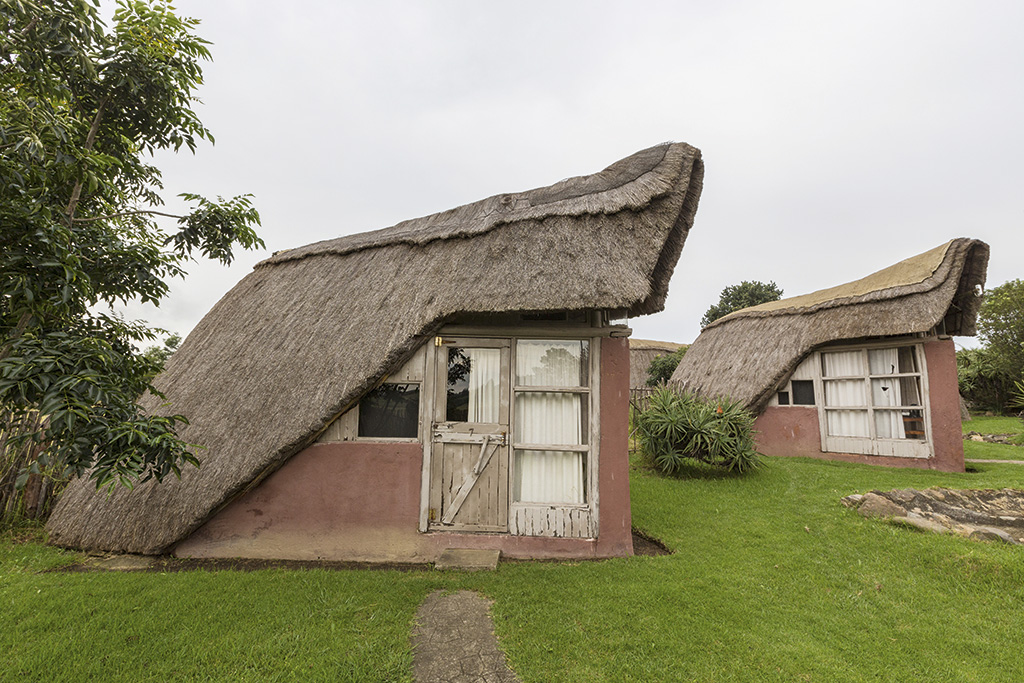
Hawane Resort. Photo: Matthew Sterne
Eat Here
Mantenga Craft & Lifestyle Centre is an outdoor food court under a giant rubber tree with curio shops, a pizzeria, a wine boutique and one of the only coffee roasters in Eswatini. Find it on Facebook.
Malandela’s Restaurant is an Eswatini icon with signature dishes such as Sir George’s oxtails, Swazi mixed grill and a range of burgers. malandelas.com
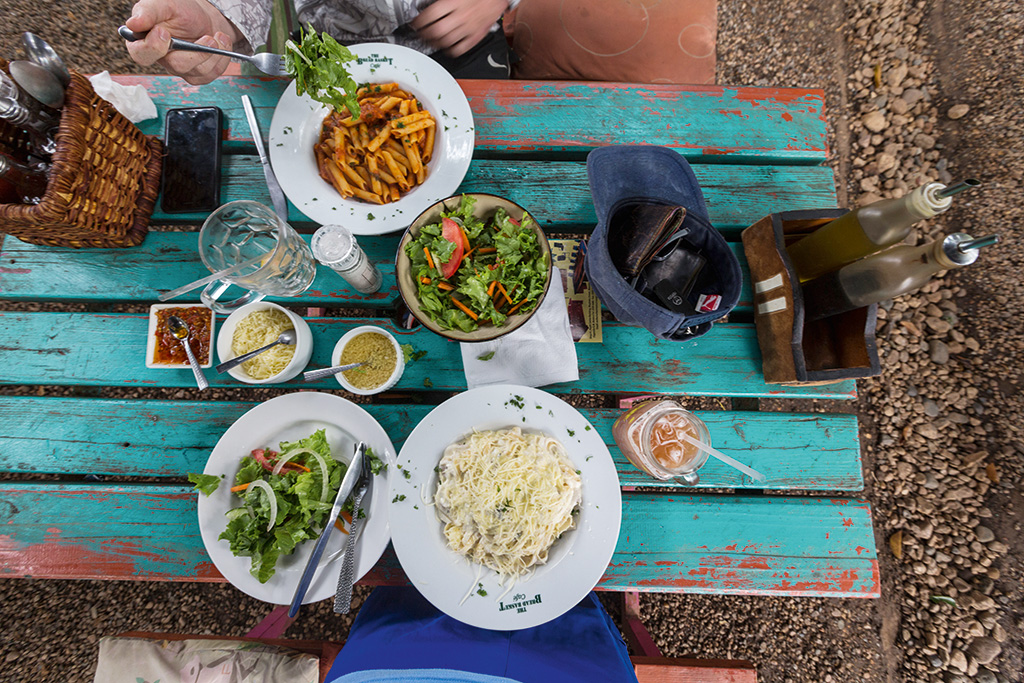
MantEnga Lifestyle Centre. Photo: Matthew Sterne
Do This
Go ziplining in Malolotja National Park. The tree-canopy tour has 10 ziplines that criss-cross a gorge, with the longest 130m and the highest 60m. It takes about 2½ hours and costs R695. canopytour.co.za
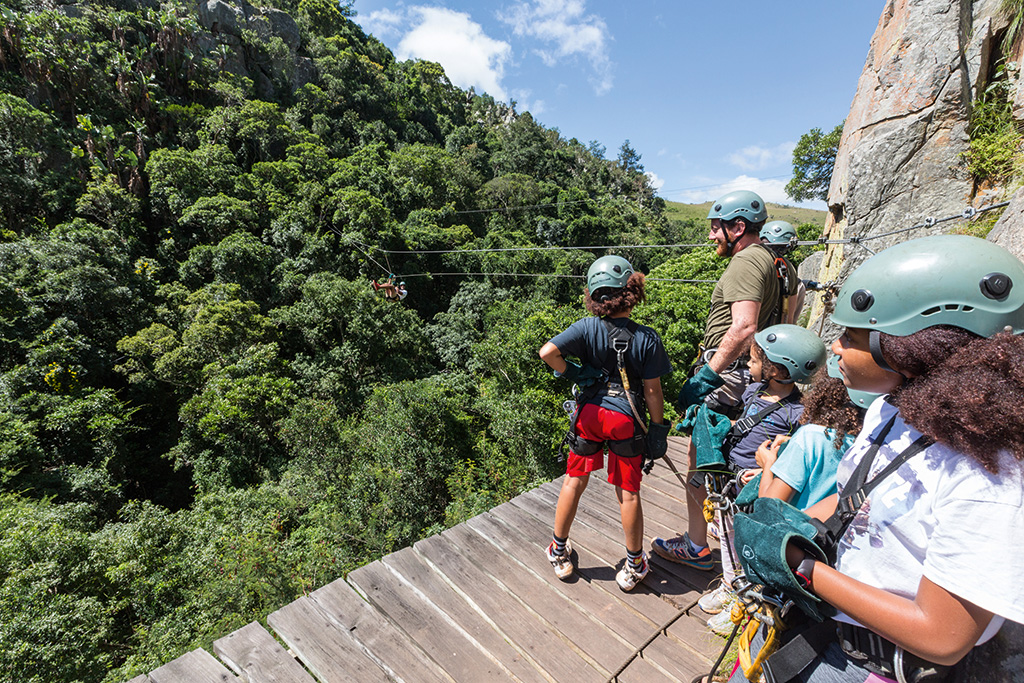
The ziplines on the Malolotja Canopy Tour have names such as Ant House, The Ferrari and Wind Cheetah. The first one was called The Rabbit Hole, because it’s ‘like a portal to a different world.’ Photo: Matthew Sterne
Hike to Malolotja Waterfall. Malolotja has more than 200km of mapped trails in its 18,000ha extent. On a quick visit do the three-hour trail to the tallest of the 26 waterfalls in the park. Entry to the park is R30. sntc.org.sz
Summit Sibebe Rock. No ropes, no railing. The plateau up top is a worthy reward. From R465 per person. swazitrails.co.sz
Explore the Gobholo Cave. Not for those with a fear of small spaces, it’s a very adventurous outing in this seldom-explored cave system. From R625 per person. swazitrails.co.sz
Go white-water rafting. This has been Eswatini’s top adventure activity for over 25 years. There are daily departures throughout the year. Swazi Trails has half-day and full-day tours and a rafting-abseiling-tubing combo. Trips leave from the Mantenga Craft & Lifestyle Centre. From R1,150 per person. swazitrails.co.sz
Ride horses in Mlilwane. Chubeka Trails offers hourly rides, a half-day Rock of Execution Trail, and multi-day camping trails for two to eight people. R340 for one hour. biggameparks.org
Mountain bike in Mlilwane. Cycle through plains of wildlife such as zebra, kudu and blesbok on self-guided or guided routes in this
4,560ha reserve. From R135 for a one-hour bike hire (unguided) and R190 (guided).biggameparks.org
Shewula Mountain Camp offers a range of activities including mountain biking, hiking, a village tour and a visit to the local sangoma. From R70 per activity. shewulacamp.org
About the vehicle
We zoomed around Eswatini in a Toyota C-HR 1.2T Luxury CVT. It was ideal for our trip as this crossover vehicle combines the agility of a hatchback with the convenience of an SUV. The C-HR is boosted by its turbocharged 1,2L four-cylinder petrol engine and comes with a sleek design and a host of cool tech and features. R441,900, toyota.co.za

You may also like
Related Posts
Whether you’re in a two-person hiking tent eye-balling the peaks or a full caravan in...
read more
Gabrielle Jacobs forsakes the Breede Valley’s winelands for some Cape nature at Vrolijkheid Nature Reserve,15km...
read more
A new guided hike in the Western Cape known as the 16 Mile Beach Challenge...
read more